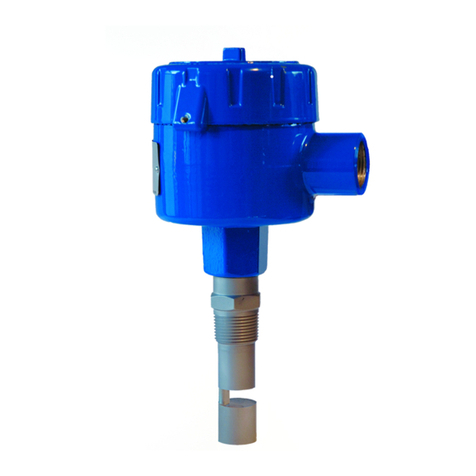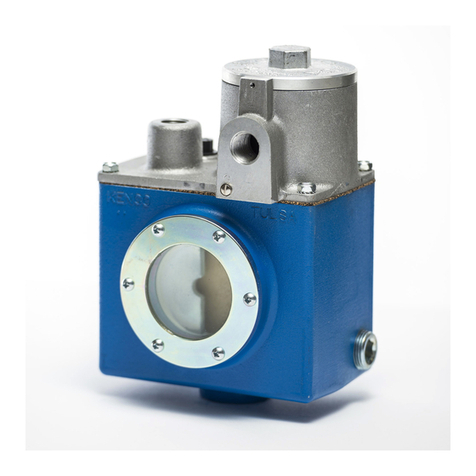
KENCO ENGINEERING COMPANY
P.O. BOX 470426 TULSA, OK 74147-0426 ●PHONE: (918) 663-4406 FAX: (918) 663-4406
MODEL KUST ULTRASONIC SWITCH
INSTALLATION / OPERATION INSTRUCTIONS
GENERAL DESCRIPTION
The KUST Series Ultrasonic Level Switches are ideal, low cost solutions for many liquid level control applications. They
operate in a wide variety of services.
PRINCIPLE OF OPERATION
Ultrasonic switches use piezoelectric crystals to transform electrical energy into mechanical motion (sound). The
Transmit Crystal sends a pulse of sound through the space between the crystals, to the Receive Crystal. If the space is
filled with air, gas, or vacuum, the Receive Crystal does not detect the sound pulse. However, if the space is filled with
liquid, any liquid, the pulse is detected by the Receive Crystal, and the switch output changes.
MODEL DESCRIPTION
KUST - - - - - - - -
Input Power
Output
Switch Mounting
Sensor Material
Sensor Length
Process Connection
Flange Size
Flange Material
INSTALLATION
Unpack the switch carefully. Inspect all units for damage. Report any damage to carrier immediately. Check the
contents against the packing slip and purchase order.
Kenco’s Ultrasonic Switches are manufactured to the highest quality standards. These switches use electronic
components that can be damaged by static electricity. Make sure that you are properly grounded before starting
installation. Insure that all electrical connections are properly made, and that there are no “floating” connections.
Description Code Description Code Description Code Description Code
Standard (2.25”) 00 ¾” NPT 1 None None
*Inches (3” – 120”) xxx 150# Flange F 1-1/2” 0 Carbon Steel A
*316SS Sensor Only 300# Flange H 1 1 316SS S
Sanitary Flange S 2 2
3 3
Description Code Description Code
115Vac 1 10A DPDT 1
230Vac 2 Two-wire 2
24Vdc 3
12Vdc 4
Switch Mounting Sensor Material
Description Code Description Code
Integral 1 316SS S
*Remote 2 Tefzel®T
*Remote 10ft. (std.)
100ft. (max)
























